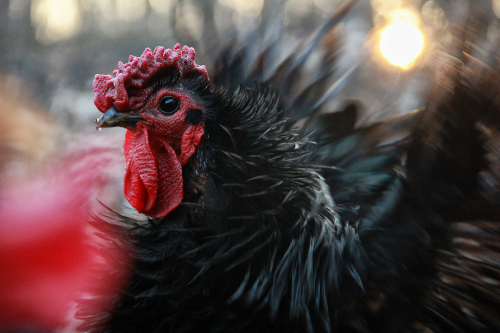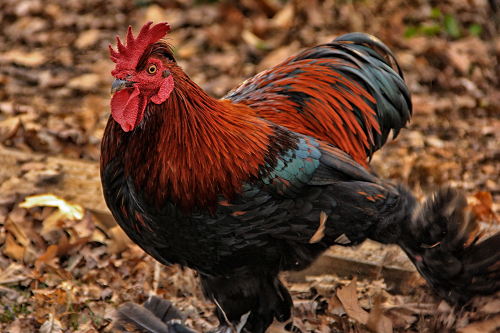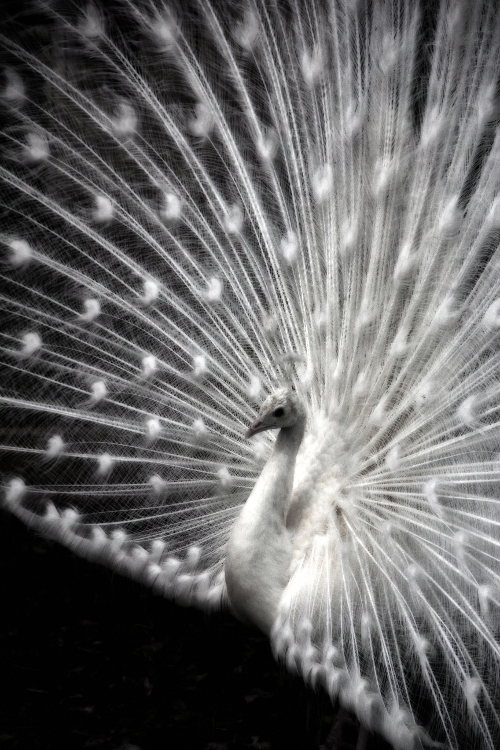Peacocks: More Than Just a Pretty Tail
 When you think of peacocks, it conjures images of stately manors with water cascading through stone fountains in the yard and a few regal India Blue Peacocks lounging around the grounds. Maybe one or two with their majestic tails fanned like beautiful living lawn ornaments. Okay, maybe that’s just me…
When you think of peacocks, it conjures images of stately manors with water cascading through stone fountains in the yard and a few regal India Blue Peacocks lounging around the grounds. Maybe one or two with their majestic tails fanned like beautiful living lawn ornaments. Okay, maybe that’s just me…
But seriously, peacocks have long been prized for their beauty and have been regarded as the wealthy man’s poultry. Their size alone makes it prohibitive for most backyard poultry keepers to have, let alone, breed them. Still, just as people get baby chicks for their kids at Easter with little or no knowledge of their care requirements, many people are acquiring young peacocks for yard ornaments with little or no idea what they need to be happy and healthy. And what happens when a bird is not happy and healthy and you have left it to be an outdoor adornment? Simple…it leaves. I won’t go so far as to say it’s an epidemic, far from it, but it is not uncommon to see one in our area roaming a park or field far from a farm or homestead. And although I admit the possibility of wild breeding populations, the fact is that peacocks are just not indigenous to the Mid-Atlantic U.S
 So let me set the scene for you… It’s late August, the golden rays from the afternoon sunlight cascades through the trees. The quiet lazy afternoon air hangs over the yard like fine lace. From the edge of the wood line you hear “RAAAWWWWW AWWWW RAWAAA”. The call of a male peacock that breaks the calm of the day like a semi truck through a flower shop window. This was the first time we saw Big Bird, our white male peacock. We have no idea where he came from, but from that day, he stayed. He spent his days communing with Zach our white silkie Rooster and his little harem of hens. He ate from the wild bird feeder, sunbathed in the open field behind the house and slept 20 feet up in a hickory tree.
So let me set the scene for you… It’s late August, the golden rays from the afternoon sunlight cascades through the trees. The quiet lazy afternoon air hangs over the yard like fine lace. From the edge of the wood line you hear “RAAAWWWWW AWWWW RAWAAA”. The call of a male peacock that breaks the calm of the day like a semi truck through a flower shop window. This was the first time we saw Big Bird, our white male peacock. We have no idea where he came from, but from that day, he stayed. He spent his days communing with Zach our white silkie Rooster and his little harem of hens. He ate from the wild bird feeder, sunbathed in the open field behind the house and slept 20 feet up in a hickory tree.
We tried unsuccessfully to find Big Bird’s rightful owners. The likely scenario is that one of the area’s new McMansion owners got him for a yard bird. Big Bird probably decided he wanted more out of life and followed our wild hen turkey home from her walk-about one day. Either way, as the days passed, he became a part of our little family.
As winter approached, we knew we needed to make some sort of arrangements for him. Now, white peacocks are not albino, they are a variant of the India Blue peacock breed. In our area of the country, they are considered winter hard, but they do require some sort of shelter. The same cannot be said for peacock breeds that come from any of the green blood lines. They need shelter with a heat source this far north. They all need a reliable food source for the winter. They are excellent foragers, but when winter brings a thick blanket of snow, they are hard put to find the necessary nutrition. The same winter hardships affect wild animals, making peacocks very susceptible to predation in our area. There has been a lot of development in recent years and many animals around here have shrinking habitat and hunting grounds making domestic fowl a more accessible food source. I personally don’t believe in leaving any domestic animal to be completely free range. We strive to provide more than adequate habitats for all of our poultry, but I feel it is my ultimate responsibility to ensure their safety. The decision was made to adapt one of the runs in the barn for Big Bird and we resigned to shoulder the expense of a new habitat in the spring so that Big Bird could remain a part of our family. Someone else’s carelessness brought us an unexpected expense, but a truly beautiful and cherished member of our little flock. What we went through to catch him is a story for another day…
Click here to check out Project – Code Name: Fandancer, the building of a peacock habitat.


